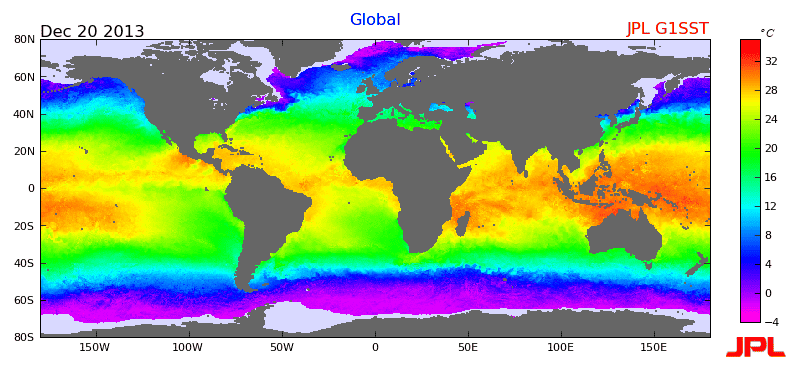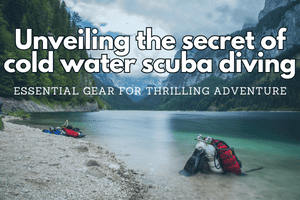Diving is the most fun one can have in the water, and having the right equipment is a critical factor in enjoying your time in the underwater world. Being adequately prepared to dive in cold water will just open up a whole new world of diving; it allows you to see all sorts of new habitats and communities of animals and plants and allows you to have access to a much more extensive list of shipwrecks that you will have access to.
So, what is considered cold water diving?
According to the National Center for Cold Water Safety, they state that water ranging from 21-15 C (70-60 F) is considered dangerous its waters below 12 degrees c are considered Very dangerous. NASA reports that the AVERAGE global ocean temperature is 20 degrees Celsius, so one can understand that there is a lot of diving to be had in the colder waters.

Coldwater diving can be considered anywhere you need an exposure suit (wetsuit) 5mm or thinker. That is usually required anywhere where the water is 15 degrees or colder. There are personal preferences and sensitivity to consider, I personally have low body fat from focusing on my fitness. This often causes me to be much more sensitive to the cold. Most of the people I dive with are fine on a 45-minute dive in 18-degree water in a 3 mm wet suit while it can leave me shivering toward the end of the dive, this is something you can consider when preparing for cold water diving.
Timing the gearing up
Prepping for cold water diving is all about having the right equipment that will keep you safe and comfortable when diving. And preparing them for the dive properly so as not to let the surface temperature affect your safety and comfort pre-dive. Because cold water diving is equipment intensive, I want to start at the beginning, checking the weather before the dive. If it will be warm out, make a mental note that you will be wearing a heaving thermal layer ( wet suit/dry suit), as dawning your thermal layer too early will affect how the rest of your dive will go. One will have a tendency to overheat if it’s a sunny day and you put on a 5-7mm wetsuit 20-30 minutes before the dive. If you diving in the fall or winter, it is also essential to consider because dawning your thermal layer early will help you stay warm, but you will have exposed hands during the gearing-up process.
So, what gear do you need to dive into cold water?
Gloves

What glove one will use will depend on a few factors, but the rule of thumb to keep in mind is that if you are diving in water colder than 12 degrees Celsius, you need to consider thermal protection for your hands. In most cold water conditions, a 5 mm wet glove will do just fine for a dive up to 30-60 min, depending on the depth. If you are diving in a dry suit and have a dry glove, use them with a light liner.
One has to consider keeping your hand warm and usable is more than a comfort situation when cold water diving it is really about safety. Your hand and extremities will get cold faster than the rest of your body, but you can’t let your hands get so cold that you can’t feel them or, even worse, can’t move them. The main reason is a rescue situation. Whether you have to self-rescue or you have to help your buddy, one has to be able to use your hands.
If you are looking for how to pick suitable cold water dive gloves, click the link here.
Hood
Whether you are diving in a wet suit or a dry suit, it’s essential to wear a hood in cold water diving. One, it will make any cold dive far more ejoyable, but it will also keep you overall warmer during the whole dive. Depending on your setup and the conditions you are diving in, have a hood anywhere from 3 – 5 mm for typical cold water dives, but when tackling cold water in the winter with water temps between 7 degrees or colder, a 7 to 11mm hood would be ideal.

One thing to keep in mind, no matter what size hood one chooses, is that when you initially enter the water with a neoprene hood, it needs to fill with water to trap a thermal layer. This first wave of water entering the hood will be very cold, and if you dive in sub-4-degree water, you may even experience some brain freeze. This should only last a few seconds, but it is very typical and should not persist if the hood is appropriately fitted.
If you are looking to learn how to pick a hood for cold water diving, click the link here.
Wetsuit
Wetsuit layer
A wet suit is the most common type of thermal protection available to scuba divers. It is very common to use a wet suit even in what most people would consider warm water diving, as in the Caribbean. If I am doing multiple dives in a day in the Caribbean, even when the water is 20-25 degrees Celsius, I’ll use a three or 5-mm wetsuit just to keep me comfortable if the dive is 40-60 minutes long.
So what about cold water diving? What kind of wetsuit should one use?
In cold water diving, having suitable gloves and hood, having the right wetsuit and using it correctly will make all the difference. Once you are in a cold water zone, normally, the minimum thickness wetsuit one would use is a 7 mm one-piece wetsuit. This would be a very common choice. If you’re diving in an area like Tobermory, Canada, where even in the height of summer, water could be 7 degrees on the surface and as cold as 2 degrees at depth, you’re going to need more protection than a 7mm one-piece wetsuit. The ideal choice would be a 7 mm Farmer John style wetsuit and a 5 mm shorty wetsuit over the Farmer John wetsuit. This will keep you as warm as possible using a wetsuit. It is 12 mm thick, and in some situations, you can find a 7mm shorty wetsuit available, giving you 12-14mm of thermal protection over your body’s core. If you are not getting the proper thermal protection with two layers of neoprene, your next option is to use a dry suit.
Drysuit
A dry suit usually gives you the most versatility regarding thermal protection. The main downside to a dry suit is that it costs more relative to a wetsuit, not all dry suit shells give you any thermal protection, and they require more training and skills to use a dry suit.
Not all dry suits are made the same. Neoprene dry suits provide some thermal protection but are normally very buoyant and restrict a lot of range of motion, the alternative is a shell-style dry suit. These are typically made of some type of robust plastic but provide very little thermal protection. The protection comes from the base layer that one selects with the dry suit. This allows one to use a sweater and joggers under the dry suit for a typical dive. Still, when diving in cold water, one would select a thick undergarment layer specific for diving fast drying qualities and thermal protection even when wet. It will look like a snowsuit or a snowmobiling winter suit. Being completely dry and having a thick layer of fleece, it is safe to say you will be warm for most cold water conditions.
If someone is doing long dives, has to do decompression stops in cold water conditions, has any compromising medical conditions, or is particularly sensitive to cold, there is one final option available for a dry suit: a heated undergarment. This requires some simple modification to the dry suit to enable a waterproof electrical cord to go from a batter back to a heated undergarment inside the dry suit. This would be the ultimate in cold water comfort. There are even brands that will offer heated gloves.
Regulator ready for cold water
You don’t necessarily need a special regulator for cold water diving. However, there are certain features that will optimize a regulator’s performance in cold water. Many regulators designed for cold water are environmentally sealed. This feature helps prevent components from freezing. Some will also use materials that are resistant to freezing, such as Titanium and nickel-plated brass. Finally, many will also have heat exchangers or thermal protection for the coldest conditions.

An adjustable second-stage regulator that allows you to fine-tune the airflow will help on cold water dives when you may have a higher demand for air.
Why one shouldn’t rule out cold water diving
Most of the oceans are considered cold water dives, and the opportunity to dive in cold water shouldn’t be passed up on. There are incredible opportunities to dive with all sorts of species like seals and whales, along with kelp forest and all of the incredible wrecks to dive.
Don’t let a little cold water scare you. With the right equipment, it can make almost any dive safe and comfortable.

